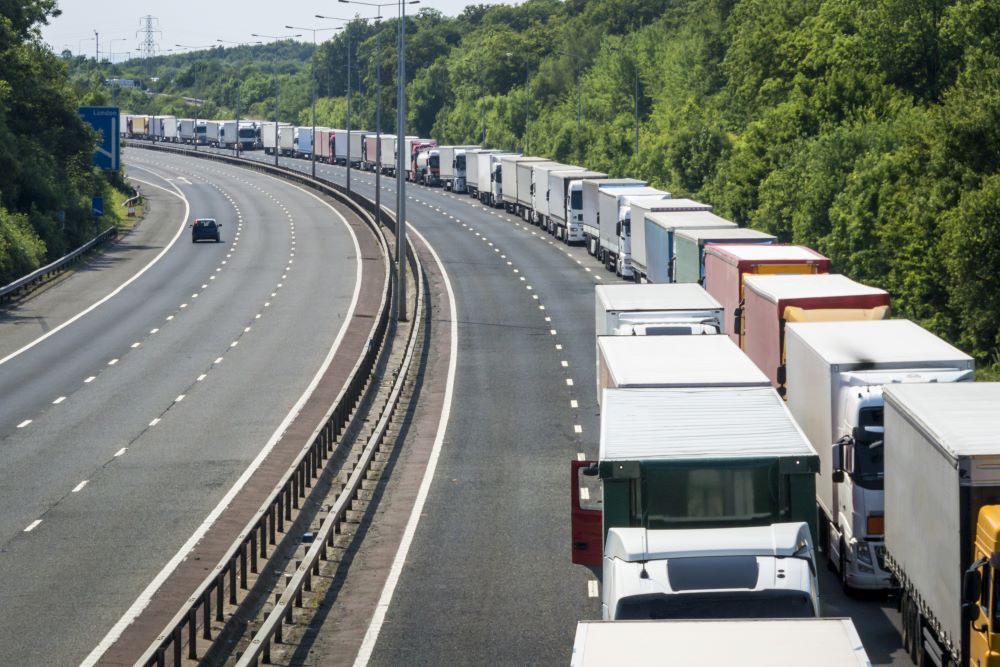
The Cabinet Office has warned that Britain’s border controls are about to face their sternest test yet as modelling indicates that cross-Channel freight will begin to return to normal in the coming days.
Freight levels have been low so far this year due to pre-Christmas stockpiling and a reticence among hauliers to use routes while new IT systems bed in.
However, disruption has nonetheless been caused by the UK’s leaving the single market and customs union at the end of the transition period on 31 December 2020.
Turned away
At the worst point in January, one in five lorries bound for the EU was turned back from the UK border because of incorrect paperwork or because the driver could not produce a negative Covid-19 test, the Times reports.
Stephen Bartlett, chairman of the Association of Freight Software Suppliers, warned that the disruption may be about to escalate.
“There could be more disruption as trucks come through that aren’t prepared with paperwork or drivers who haven’t been tested for COVID-19. There will be more issues,” he said.
However, the government is optimistic that the worst may be behind, with Cabinet Office monitoring finding turn-backs have fallen to about 4% in recent days.
Modelled worst-case
According to Loadstar, a digital simulation of the return of pre-Brexit freight levels resulted in 20-day queues of 70,000 lorries.
Software company Simul8 modelled various scenarios and ameliorating options to discover what will happen at UK ports.
A 20-minute truck check-in time at Dover would result in a 70,594-queue of lorries with the port at 500% capacity.
Planning
However, a 2,000-lorry park, new entrances and additional staff would cut this to 300% over capacity, while diverting Dover traffic to other ports would ease the burden further.
Simul8 chief technology officer Frances Sneddon said modelling helped planners understand their options.
“By testing the options available and then tweaking the system, suddenly it is possible to find out exactly what is needed to alleviate the bottlenecks, so that sensible decisions can be made,” he said.
Adapting to challenges
Lloyds Loading List reports that despite reports of many hauliers and forwarders halting services to the UK, many others are adapting to the new trade rules and costs.
Kuehne + Nagel played down reports of paperwork problems and said its new IT system, Your Easy Brexit Solution, had digitised processes to ensure documents are checked prior to transport.
European firm DSV said it had prepared thoroughly by offering e-learning to customers to prepare them for changes and by hiring 200additional staff.
DHL Global Forwarding also said its operations were running smoothly and it was “not observing any operational issues from our end”.



